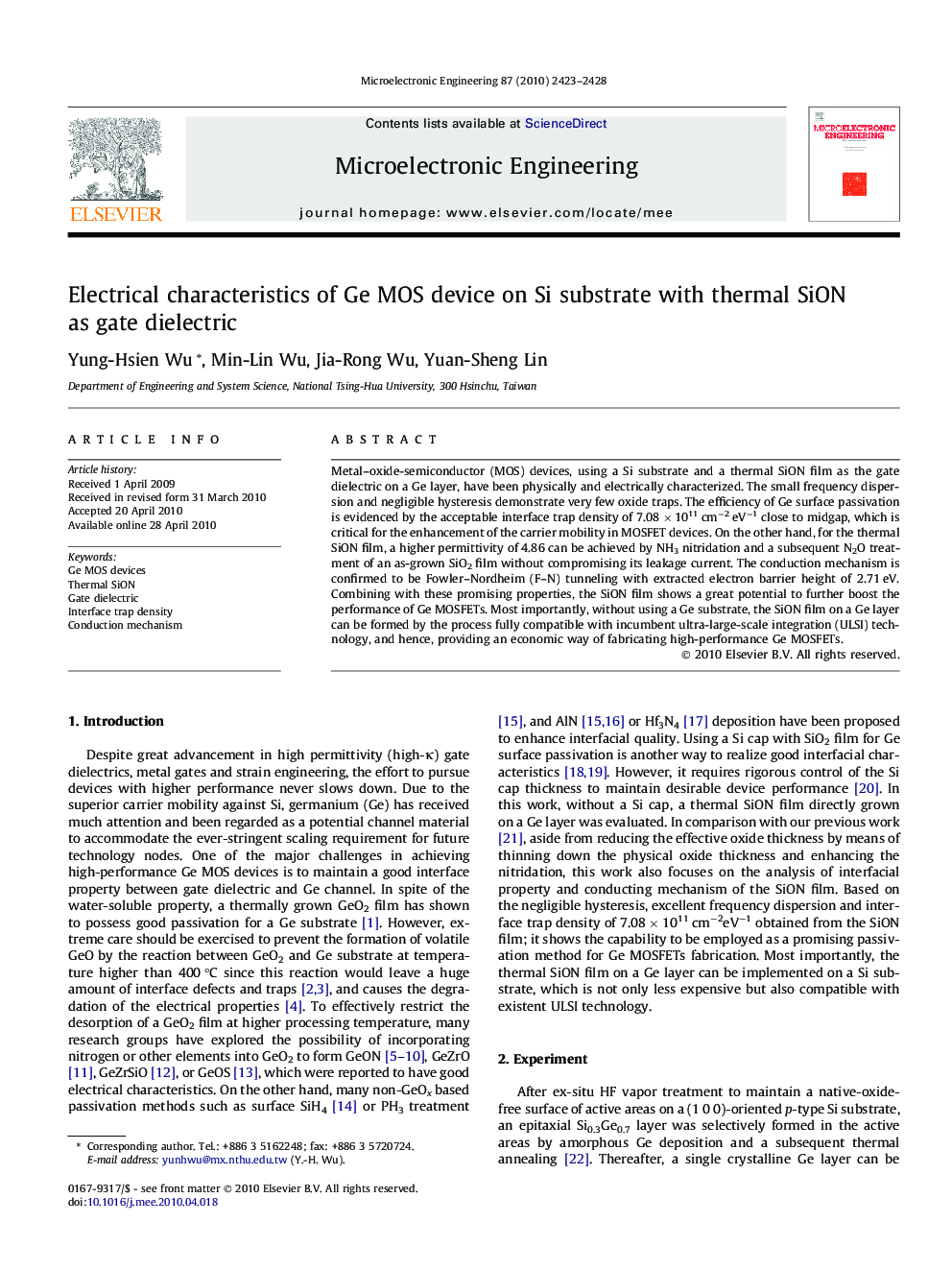| Article ID | Journal | Published Year | Pages | File Type |
|---|---|---|---|---|
| 540646 | Microelectronic Engineering | 2010 | 6 Pages |
Metal–oxide-semiconductor (MOS) devices, using a Si substrate and a thermal SiON film as the gate dielectric on a Ge layer, have been physically and electrically characterized. The small frequency dispersion and negligible hysteresis demonstrate very few oxide traps. The efficiency of Ge surface passivation is evidenced by the acceptable interface trap density of 7.08 × 1011 cm−2 eV−1 close to midgap, which is critical for the enhancement of the carrier mobility in MOSFET devices. On the other hand, for the thermal SiON film, a higher permittivity of 4.86 can be achieved by NH3 nitridation and a subsequent N2O treatment of an as-grown SiO2 film without compromising its leakage current. The conduction mechanism is confirmed to be Fowler–Nordheim (F–N) tunneling with extracted electron barrier height of 2.71 eV. Combining with these promising properties, the SiON film shows a great potential to further boost the performance of Ge MOSFETs. Most importantly, without using a Ge substrate, the SiON film on a Ge layer can be formed by the process fully compatible with incumbent ultra-large-scale integration (ULSI) technology, and hence, providing an economic way of fabricating high-performance Ge MOSFETs.
